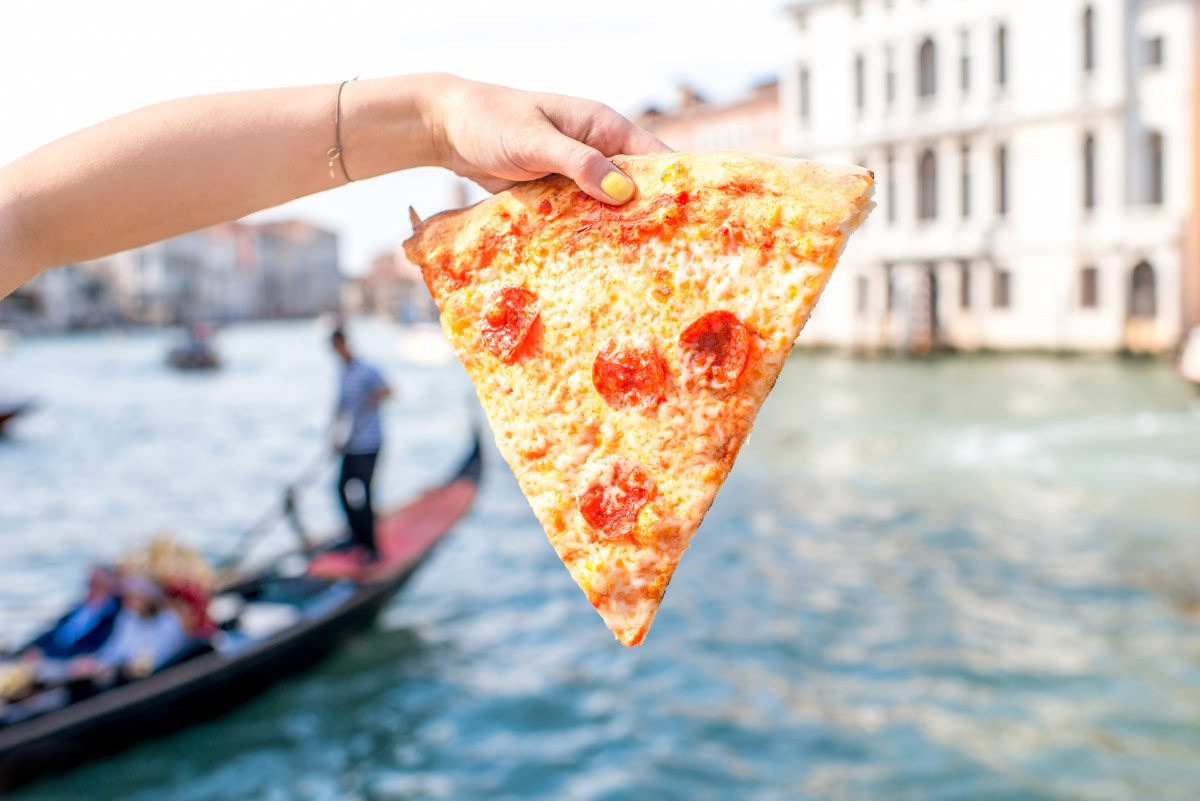One of the most popular foods on the planet, pizza has its origins in Italy. But what goes into making a ‘real’ pizza? What makes a pizza perfect? Read on to find out about this famous food and learn a thing or two ahead of your tour of Europe…

Accredited to the Italians, the pizza has made its way all around the world, with as many variations on recipes as there are places to eat it! But although it’s fair to give Italians the credit, the idea of putting tasty toppings on bread isn’t a new one, and using flatbreads with a variety of tasty toppings was nothing new to the ancient Greeks.
The term ‘pizza’ (meaning pie) was supposedly coined near Rome and Naples in around 1000 AD. By the 18th century, pizza was a cost-effective way of feeding the peasantry – and a tasty one too. Strangely enough, people had only begun to realise that tomatoes (which had been brought over from the New World) were edible, and by the end of the 18th Century, tourists and Neapolitans were adding tomatoes to flatbreads and baking it – creating pizza as we know it today.

In 1889, Queen Margherita and King Umberto I toured their kingdom, and the queen noticed what the peasants were eating. She tried it and loved it, and ordered her chef to make a variety of pizzas for her. He designed a pizza topped with basil, tomatoes and mozzarella – all the colours of the Italian flag – and named it after her; giving us the Margherita pizza we know today. (See above.)
After the Second World War, Allied soldiers returned from Europe, and their demand for pizza made it hugely popular, even outside of Italian neighbourhoods, giving rise to the countless pizzerias and pizza chains we know today.
But with all the varieties of pizza out there, what would you be looking for in Italy if you wanted authentic Neapolitan pizza? Believe it or not, there are specific recipes and standards set by ‘The True Neapolitan Pizza Association’; which recognises only the Marinara (topped with tomato, garlic, oregano, extra virgin olive oil and possibly basil) and the Margherita as authentic pizzas. The Italian Ministry of Agricultural Politics recently passed a law governing how the pizzas must be made if they are to have either of these names:
– Must be round and no more than 13 and three-quarter inches in diameter
– Center must be less than one-tenth of an inch tall
– Crust must be three-quarters of an inch thick or less
– Dough must be kneaded entirely by hand.
– Only traditional, specific types of salt, flour, tomatoes and yeast to be used.
With standards like that, one can only imagine what they would say to a ham and pineapple pizza, or worse – a stuffed-crust pizza!

Having said that, I have to admit to enjoying a few mushrooms on my pizza – or even olives, the occasional anchovy and possibly even a slice or two of salami! I guess it all comes down to taste and preference, and there’s nothing wrong with a variation on the theme. But at least you know what an ‘authentic pizza’ will look like when you visit Italy on your tour of Europe.
Bon Appetito!
Source: HowStuffWorks.com
